
An overall dull red bird who wears his bright red, licked back, crest with pride.
The Crested Ant tanager:
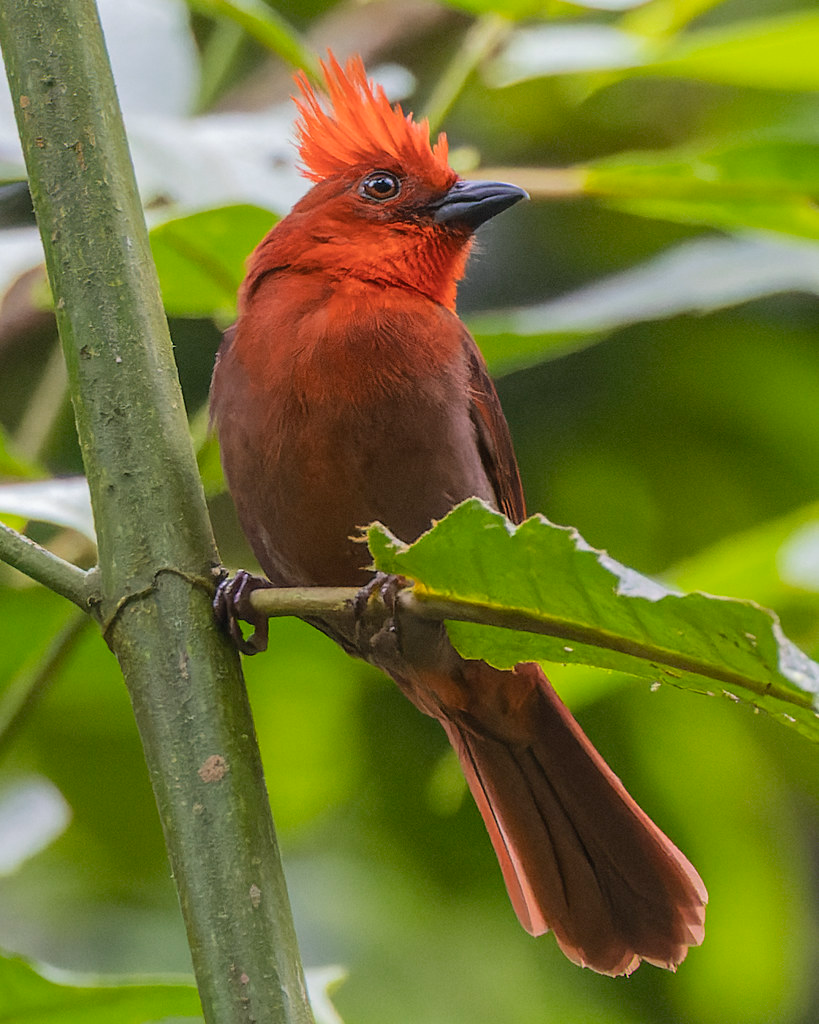 “_GTL1410-CR3_DxO_DeepPRIME” by gary_leavens is licensed under CC BY-SA 2.0.
“_GTL1410-CR3_DxO_DeepPRIME” by gary_leavens is licensed under CC BY-SA 2.0.
The crested ant tanager (Habia cristata) belongs to the Cardinalidae family and is exclusively found in Colombia. Measuring around 19 cm (7.5 inches) in length, the male exhibits a dusky red head adorned with a vibrant scarlet crest. Its upper body transitions from red on the shoulders to dark crimson, eventually fading to brownish red at the rump. The throat and chest display a brilliant red hue, while the underparts appear gray, sometimes tinged with red. In comparison, the female possesses similar features but in a less vibrant manner, with a smaller crest. The immature bird lacks a crest, displaying reddish-brown upperparts and a cinnamon tone on the underside.
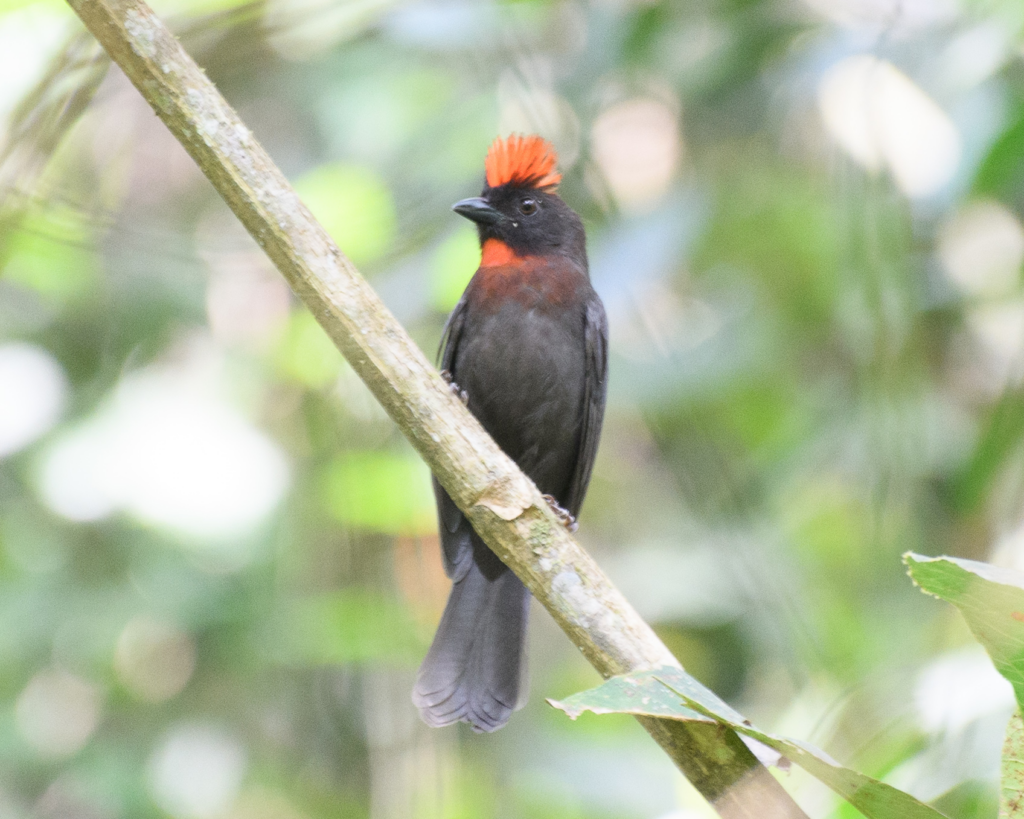 “Sooty Ant-Tanager male with crest raised” by Adaptivity77 is licensed under CC BY-SA 4.0.
“Sooty Ant-Tanager male with crest raised” by Adaptivity77 is licensed under CC BY-SA 4.0.
The crested ant tanager inhabits both slopes of Colombia’s Western Andes, stretching from the Antioquia Department south to Cerro Munchique in Cauca Department.
It is also found on the slopes of the Central Andes, extending from Antioquia to Tolima Department.
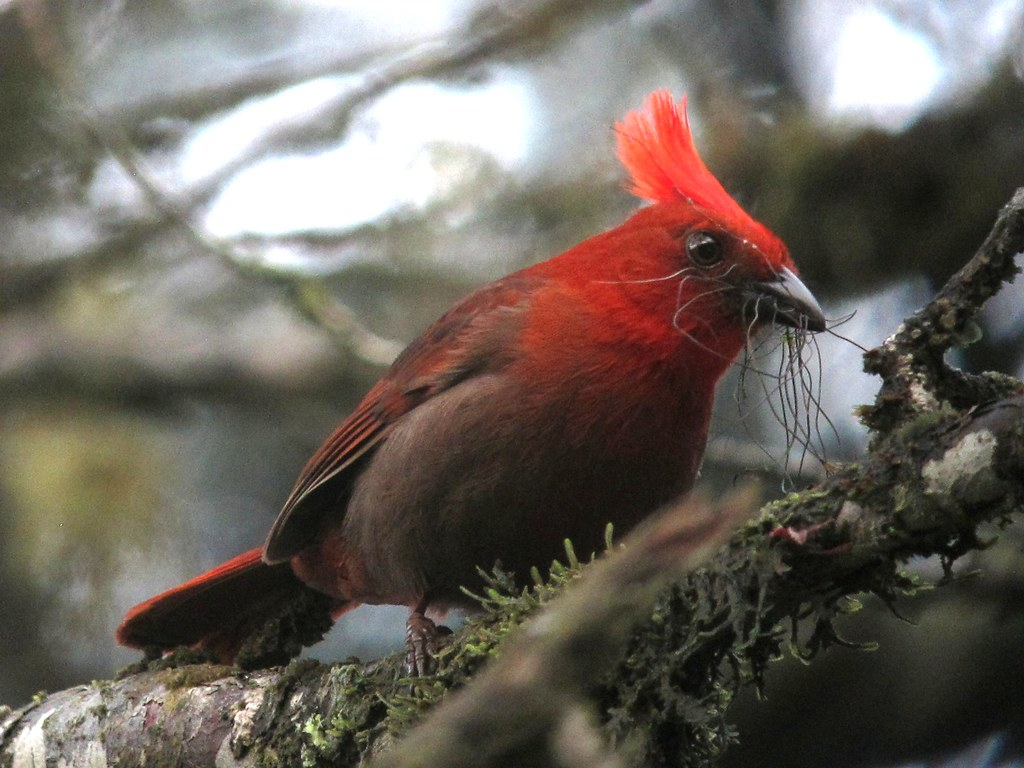 “Habia cristata / Habia copetona / Crested Ant-Tanager” by felixú is licensed under CC BY-SA 2.0.
“Habia cristata / Habia copetona / Crested Ant-Tanager” by felixú is licensed under CC BY-SA 2.0.
This species thrives within the understorey of humid mid-level and montane forests. It favors dense vegetation, particularly along streams, in openings like landslides, and within ravines. Although occasionally encountered in more open spaces, its elevation range spans from 700 to 2,000 meters (2,300 to 6,600 feet).
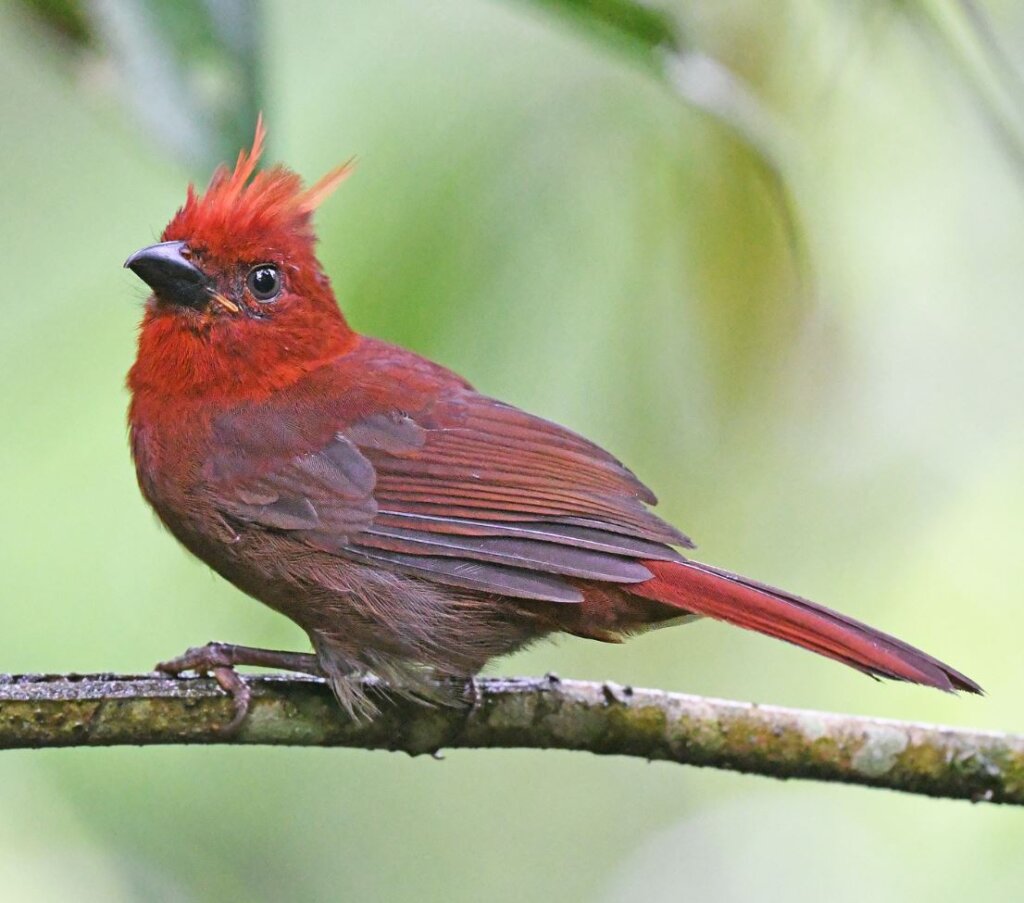 “crested ant tanager” by Christoph Moning is licensed under CC BY 4.0. (cropped)
“crested ant tanager” by Christoph Moning is licensed under CC BY 4.0. (cropped)
Primarily consuming insects and other arthropods, the crested ant tanager’s diet includes palm seeds and various fruits. It navigates through the undergrowth either in pairs or small groups, occasionally making sallying flights to catch flying insects. Interestingly, it has been observed following army ant swarms.
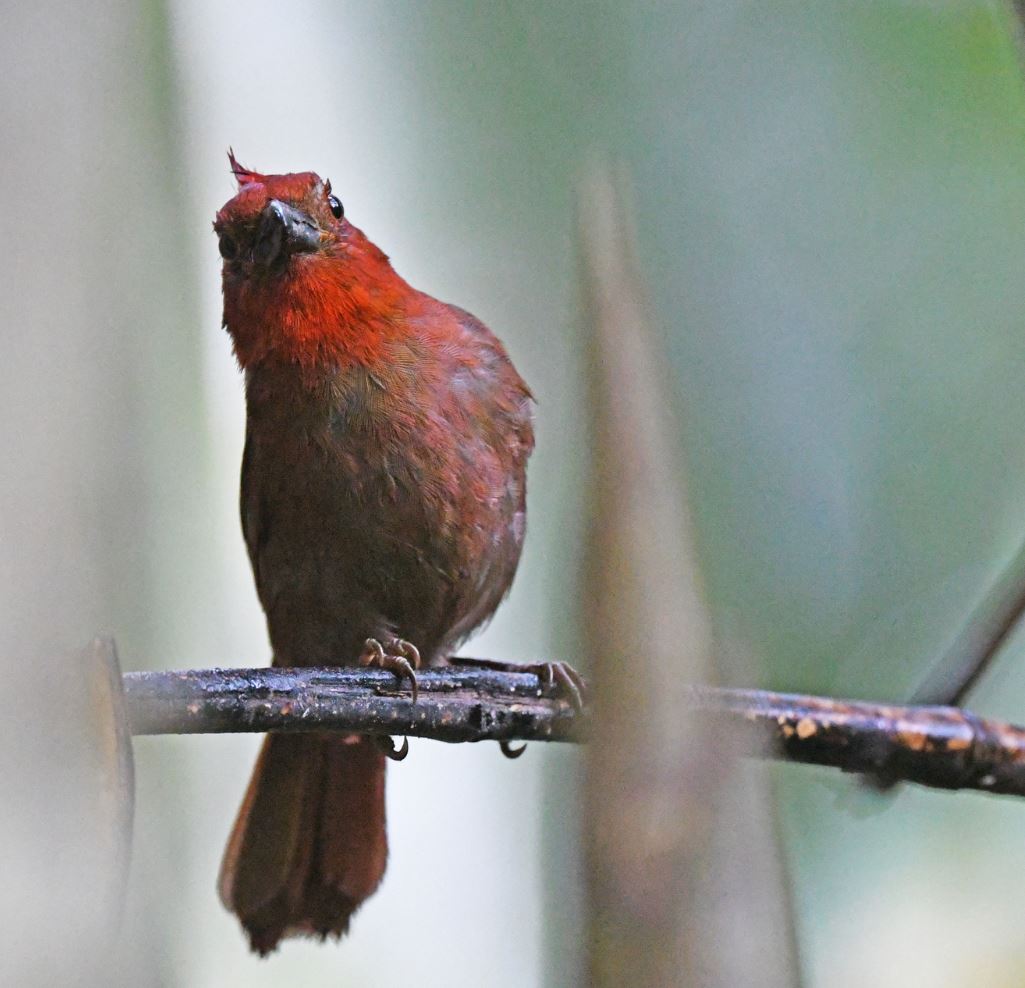 “crested ant tanager” by Christoph Moning is licensed under CC BY 4.0. (cropped)
“crested ant tanager” by Christoph Moning is licensed under CC BY 4.0. (cropped)
While limited information is available, one instance documented the crested ant tanager carrying nesting material in a ravine during June, accompanied by two others. Further details regarding its breeding behavior are yet to be published.
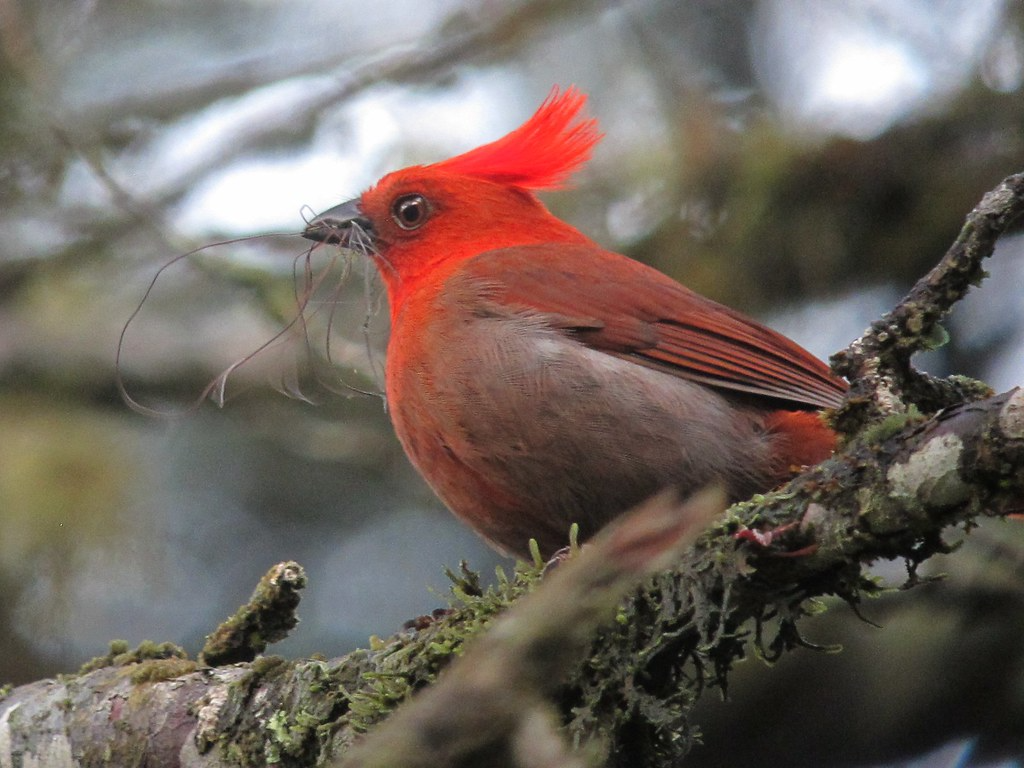 “Habia cristata / Habia copetona / Crested Ant-Tanager” by felixú is licensed under CC BY-SA 2.0.
“Habia cristata / Habia copetona / Crested Ant-Tanager” by felixú is licensed under CC BY-SA 2.0.
The dawn song of the crested ant tanager comprises repeated “che’ik” notes. Additionally, it emits a distinct “loud, shrill ‘Chi-veek!’” sound, especially during mobbing behavior.
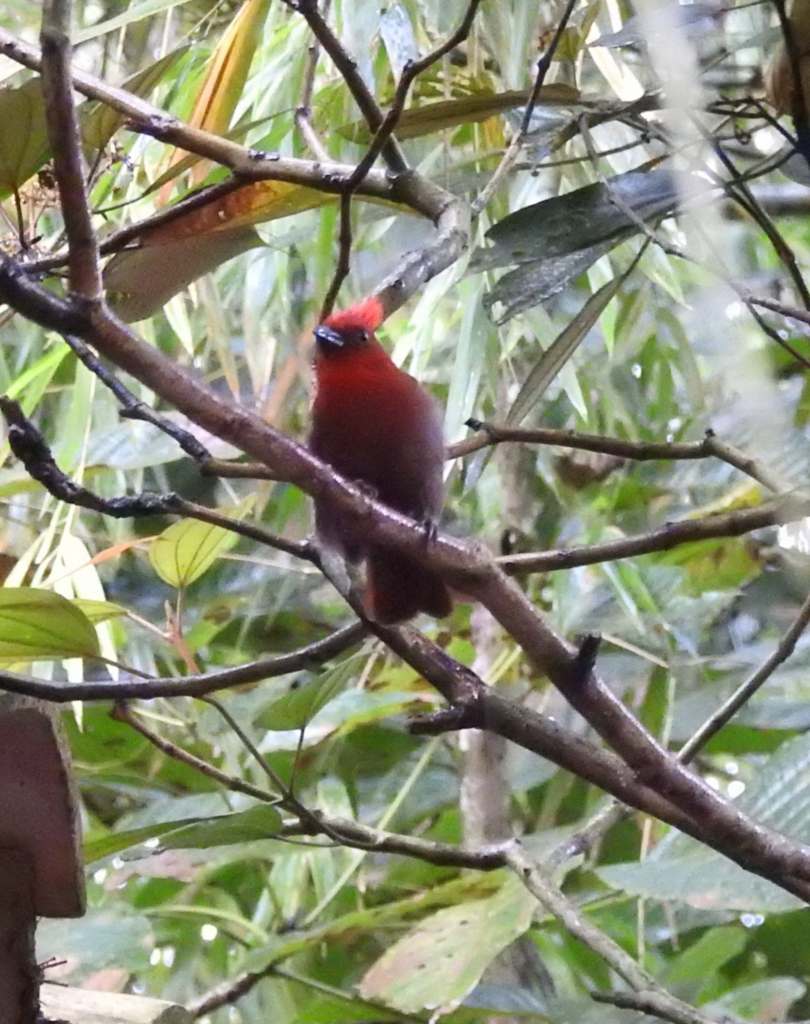 “crested ant tanager” by Laura Gaudette is licensed under CC BY 4.0.
“crested ant tanager” by Laura Gaudette is licensed under CC BY 4.0.
Initially categorized under the Thraupidae family as a “true” tanager, DNA analysis in the early 2000s revealed that all members of Habia were genetically closer to cardinals. As a result, they were reclassified into the Cardinalidae family. The crested ant tanager stands as the sole representative of its species.
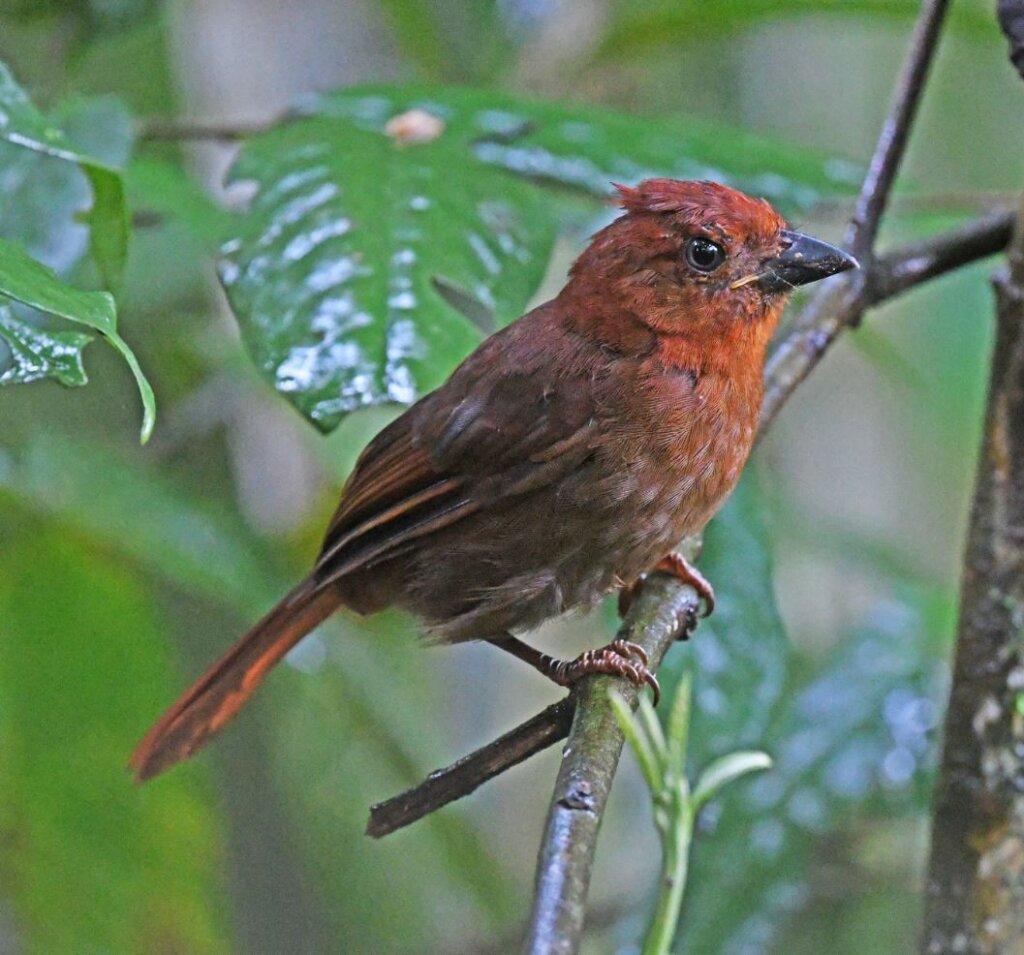 “crested ant tanager” by Christoph Moning is licensed under CC BY 4.0. (Cropped)
“crested ant tanager” by Christoph Moning is licensed under CC BY 4.0. (Cropped)
Conservation Status: Rated as “Least Concern” by the IUCN, the crested ant tanager’s presence is noted in protected areas. However, it is likely facing a decline due to habitat loss caused by deforestation, which has led to range contraction and fragmentation. It could potentially be considered at risk in the near future.
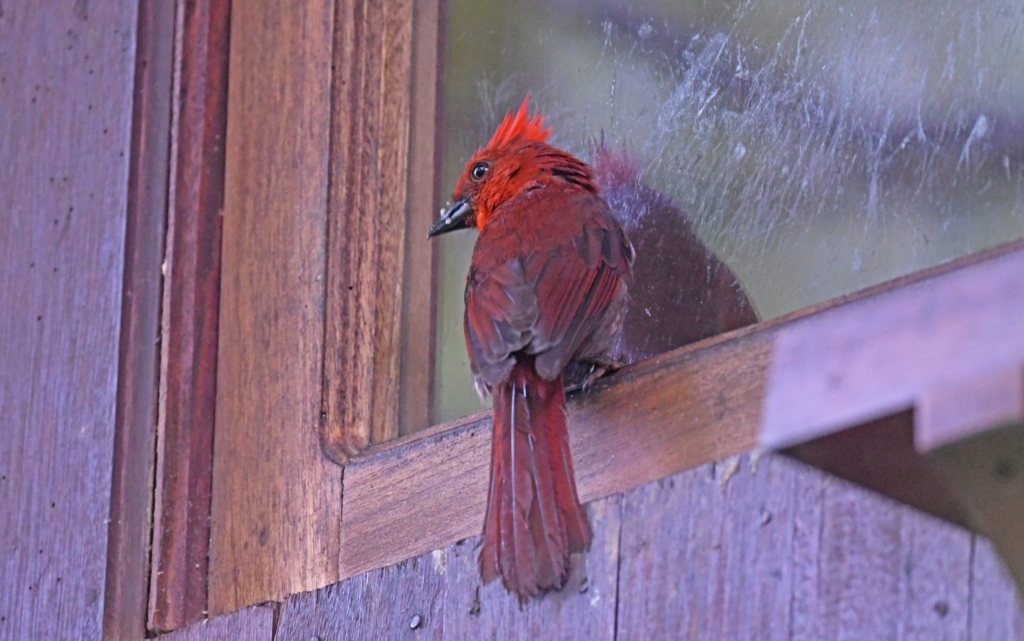 “crested ant tanager” by Christoph Moning is licensed under CC BY 4.0.
“crested ant tanager” by Christoph Moning is licensed under CC BY 4.0.
Listen to this bird below:
This article uses material from Wikipedia.org which is licensed under the GNU Free Documentation License via Copyright Wikipedia. Images on this page are the sole property of the photographers (unless marked as Public Domain). Please read the license and or contact the photographers directly before using them for any purpose. Thank you all.
A Highly Distinctive Bird Clad In A Suit Of Pale Blue Flecked With Stunning Sapphire-like Accents!
Please SHARE this article with all your bird-loving friends and family.

